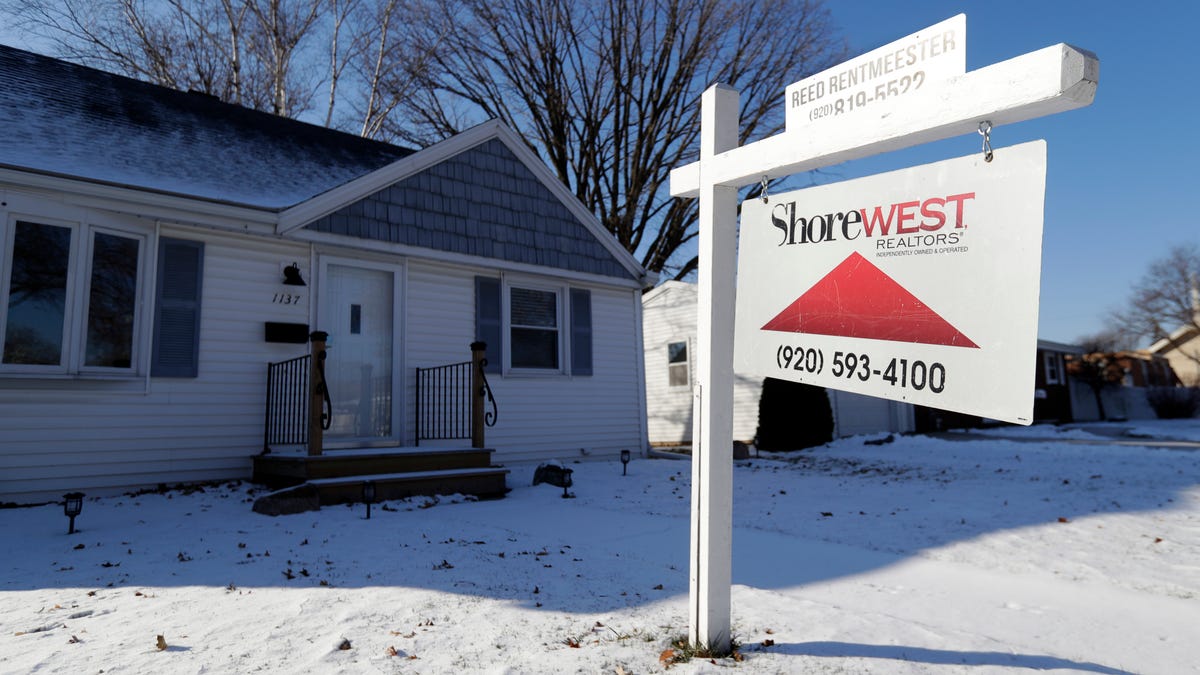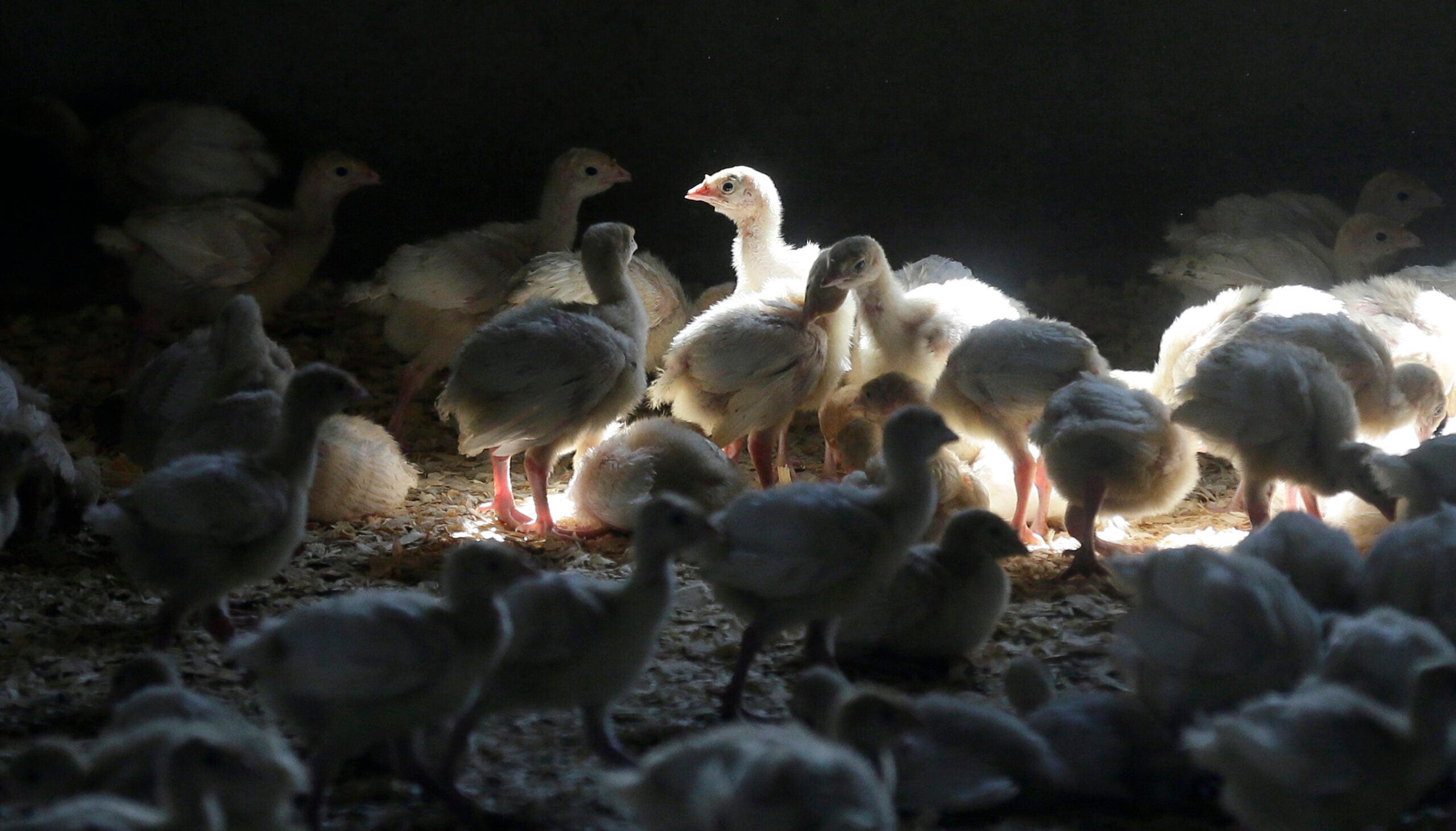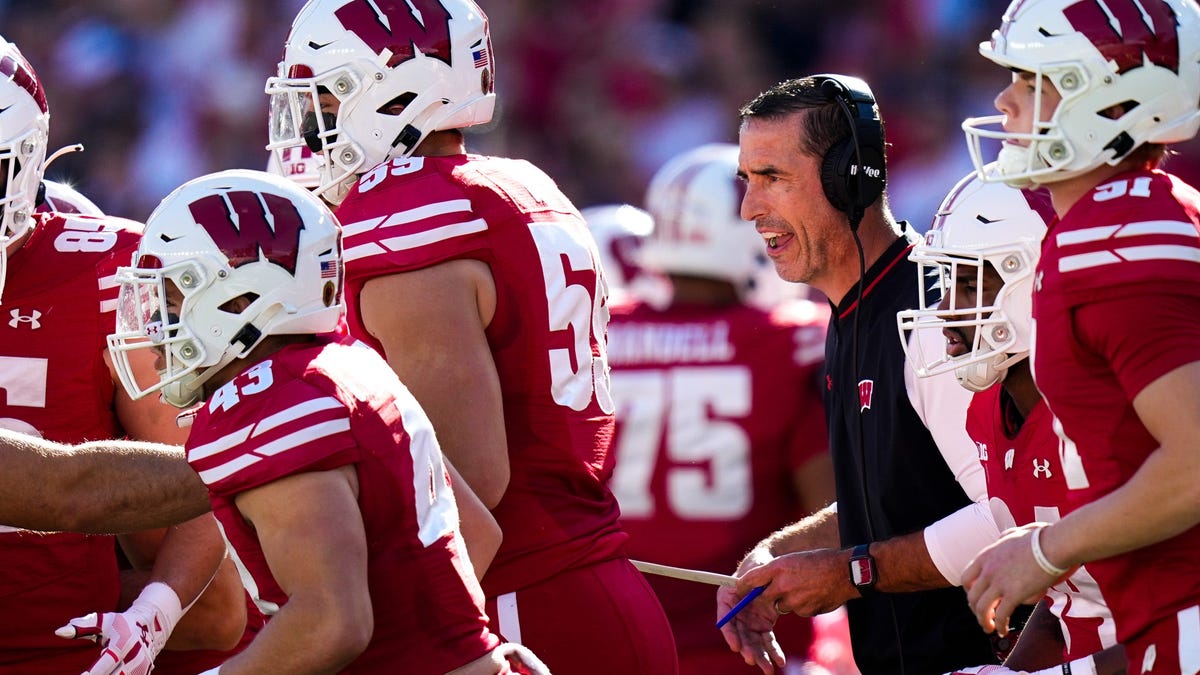Wisconsin
Signs of relief emerge for Wisconsin homebuyers

Court cases seek to change real estate commission rules
A series of court cases seek to upend real estate industry practices that determine the commissions agents receive on the sale of a home. (Nov. 2) (AP video by Nicolas Inghram)
GREEN BAY – Market conditions have shown signs of improvement for Wisconsin homebuyers as the state’s busy season ends.
Winter generally brings a slowdown in housing markets, but buyers who brave the cold temps should find more favorable conditions such as more homes for sale and cheaper financing.
National mortgage interest rates in November have dropped after reaching a 23-year high in late October. Buyers also haven’t had to offer quite as much over the asking price in order to have a chance at homes. Coupled together, they amount to improving affordability, said Victoria Imhoff, a real estate agent with Century 21 Ace Realty in Appleton.
“Things are actually starting to shift in buyers’ favor a bit more than it has been,” Imhoff said.
Wisconsin housing market data for October shows existing home sales continued to recover and inventory improved, according to the Wisconsin Realtors Association. Existing home sales dropped by 7.2% in October, ending a run of double-digit percentage declines seen for much of 2023. Some key counties even logged increases in existing home sales last month.
“This is still a challenging market for buyers, but at least we are seeing some slight improvement on the supply side,” said Michael Theo, WRA’s president and CEO, in a media release.
Here are several trends starting to favor buyers and how sellers can adapt to housing market changes as 2023 winds down.
Home sales increase in Milwaukee, Green Bay, Oshkosh and Fond du Lac areas
WRA data shows existing home sales continued to decline statewide in October.
The report had a silver lining, though: Home sales increased in several of Wisconsin’s bigger housing markets.
Rock County, home to Beloit and Janesville, recorded 197 sales, an 8.2% increase over October 2022. Milwaukee and Ozaukee counties logged sales increases of 5.1% and 9.8%, respectively.
In northeastern Wisconsin, sales increased in the Green Bay (2.6%), Oshkosh (2.2%) and Fond du Lac (3.9%) areas.
The combination of mortgage interest rate trends, more homes on the market and declining competition contribute to such positive trends, Imhoff said.
Buyers will see more homes for sale near them
Newly listed homes for sale increased to 6,719 in October, up 2% from the 6,590 homes listed in October 2022. It’s the first time since February 2022, 18 straight months, that new listings in Wisconsin increased.
More existing homes on the market means more opportunities for buyers and, potentially, better affordability since existing homes are by far the state’s largest source of inventory, said Joe Horning, WRA’s board chair.
“Hopefully this trend continues and leads to more affordable options for first-time buyers in the coming year,” Horning said in a media release.
Wisconsin homebuyers will find better mortgage interest rates
The rise in 15- and 30-year mortgage interest rates from historic lows in 2020 crushed buyers’ ability to afford the dramatic spikes in home prices in the last five years.
Now, rates have started to fall.
The average 15- and 30-year mortgage rates peaked in late October at 7.03% and 7.79%, respectively, and by Nov. 22 declined to 6.67% and 7.29%, according to national mortgage lender Freddie Mac.
In general, every 1% decrease in your mortgage rate reduces your interest costs by about $48 per month per $100,000 borrowed, or about $150 on a $300,000 home.
Lower mortgage rates and more offers coming in closer to the asking price have combined to improve affordability for some buyers, Milly Saldarriaga, of ShoreWest Realtors in Green Bay, said.
More: Wisconsin median home sale price tops $300,000 in June, a first for the state
More homes for sale near Milwaukee, Appleton, Eau Claire and Stevens Point
The problem for many buyers has long been a lack of homes for sale. But there’s ongoing signs buyers in 62 of Wisconsin’s 72 counties will find more homes for sale, per WRA.
The inventory of homes for sale — measured in months it would take to sell every home in a given market — began a slow rise in late summer that picked up more momentum in October.
Inventory in Portage County, home to Stevens Point, doubled in October, from 1.7 months to 3.4 months. Other notable inventory surges can be found in the Appleton area (59.1%), Milwaukee County (26.1%), Eau Claire (34.5%), and Dane County (16.7%).
Buyers might not need to waive home inspections
For the last few years, buyers would have to offer well above asking price and consider some risky concessions, like waiving a home inspection, if they wanted any chance of getting their offer accepted.
In another change in the market, Imhoff said buyers have been able to keep inspections in their offers recently with some success.
Saldarriaga said she does not see inspection waivers as much anymore, either.
Did you ask about down payment assistance?
Saldarriaga suggested buyers ask their mortgage lender and any regional housing agencies or nonprofits about down payment assistance, a crucial tool to assist families with a major up-front cost.
She noted NeighborWorks Green Bay can offer some buyers down payment assistance and the city of Green Bay launched a down payment assistance program for qualified buyers in December 2022. Saldarriaga said it cannot hurt to ask if there is help.
“There are institutions who can help you with down payment costs,” Saldarriaga said. “You might not always qualify for grants, but you might qualify for NeighborWorks.”
Here’s what Wisconsin home sellers can expect
Housing markets like Madison, Milwaukee and Green Bay remain solid seller’s markets, but not quite the as intensely in sellers’ favor.
“It’s not the same market,” Saldarriaga said. “The market is normalizing.”
Home prices likely won’t drop, but sellers might not get offers way above asking prices anymore, Saldarriaga said. Competition persists for properties priced below $300,000, but it’s softened a bit in higher price ranges. Right-priced homes may sell in a day or two; others may sit a little longer, Imhoff said.
“Now this is kind of how it is,” Imhoff said. “It’s important to set expectations ahead of time.”
Contact Jeff Bollier at (920) 431-8387 or jbollier@gannett.com. Follow him on Twitter at@JeffBollier.

Wisconsin
Wisconsin Lottery Powerball, Pick 3 results for Oct. 20, 2025
Manuel Franco claims his $768 million Powerball jackpot
Manuel Franco, 24, of West Allis was revealed Tuesday as the winner of the $768.4 million Powerball jackpot.
Mark Hoffman, Milwaukee Journal Sentinel
The Wisconsin Lottery offers multiple draw games for those aiming to win big. Here’s a look at Oct. 20, 2025, results for each game:
Winning Powerball numbers from Oct. 20 drawing
32-38-66-67-69, Powerball: 19, Power Play: 2
Check Powerball payouts and previous drawings here.
Winning Pick 3 numbers from Oct. 20 drawing
Midday: 0-2-9
Evening: 6-0-3
Check Pick 3 payouts and previous drawings here.
Winning Pick 4 numbers from Oct. 20 drawing
Midday: 5-7-7-8
Evening: 9-3-8-5
Check Pick 4 payouts and previous drawings here.
Winning All or Nothing numbers from Oct. 20 drawing
Midday: 01-05-07-09-13-15-16-17-18-20-21
Evening: 04-05-08-09-10-13-14-16-17-20-21
Check All or Nothing payouts and previous drawings here.
Winning Badger 5 numbers from Oct. 20 drawing
01-02-09-14-31
Check Badger 5 payouts and previous drawings here.
Winning SuperCash numbers from Oct. 20 drawing
05-08-14-20-22-24, Doubler: N
Check SuperCash payouts and previous drawings here.
Feeling lucky? Explore the latest lottery news & results
Are you a winner? Here’s how to claim your lottery prize
- Prizes up to $599: Can be claimed at any Wisconsin Lottery retailer.
- Prizes from $600 to $199,999: Can be claimed in person at a Lottery Office. By mail, send the signed ticket and a completed claim form available on the Wisconsin Lottery claim page to: Prizes, PO Box 777 Madison, WI 53774.
- Prizes of $200,000 or more: Must be claimed in person at the Madison Lottery office. Call the Lottery office prior to your visit: 608-261-4916.
Can Wisconsin lottery winners remain anonymous?
No, according to the Wisconsin Lottery. Due to the state’s open records laws, the lottery must, upon request, release the name and city of the winner. Other information about the winner is released only with the winner’s consent.
When are the Wisconsin Lottery drawings held?
- Powerball: 9:59 p.m. CT on Monday, Wednesday, and Saturday.
- Mega Millions: 10:00 p.m. CT on Tuesday and Friday.
- Super Cash: 9:00 p.m. CT daily.
- Pick 3 (Day): 1:30 p.m. CT daily.
- Pick 3 (Evening): 9:00 p.m. CT daily.
- Pick 4 (Day): 1:30 p.m. CT daily.
- Pick 4 (Evening): 9:00 p.m. CT daily.
- All or Nothing (Day): 1:30 p.m. CT daily.
- All or Nothing (Evening): 9 p.m. CT daily.
- Megabucks: 9:00 p.m. CT on Wednesday and Saturday.
- Badger 5: 9:00 p.m. CT daily.
That lucky feeling: Peek at the past week’s winning numbers.
Feeling lucky? WI man wins $768 million Powerball jackpot **
WI Lottery history: Top 10 Powerball and Mega Million jackpots
This results page was generated automatically using information from TinBu and a template written and reviewed by a Wisconsin editor. You can send feedback using this form.
Wisconsin
Wisconsin hatchery owner sees seasonal avian flu as the ‘new normal’

Birds from a backyard chicken flock in Racine were recent casualties in a string of bird flu cases in Wisconsin this year. The birds were killed to prevent spreading the disease further.
Dr. Darlene Konkle, state veterinarian from the Department of Agriculture, Trade and Consumer Protection, told WPR’s “Wisconsin Today” that the highly pathogenic avian influenza, or bird flu, is expected to spread more as wild birds continue migrating through the fall.
“Right now, we’re not at the peaks we were last year,” Konkle said. “We’ve seen an uptick in cases across the country, particularly in the northern tier of states, in the past few weeks. And of course, we’re going into the fall season, which is peak migration for a lot of wild waterfowl.”
News with a little more humanity
WPR’s “Wisconsin Today” newsletter keeps you connected to the state you love without feeling overwhelmed. No paywall. No agenda. No corporate filter.
Konkle said avian influenza can be fatal to all birds and spreads rapidly. Cows are also susceptible to avian flu, although so far this year, no cows in Wisconsin have tested positive, as has happened in 18 other states.
Konkle said keeping cows and other animals safe from bird flu in Wisconsin requires strict adherence to biosecurity measures and heightened awareness of the risks of the disease.
“We’re really encouraging flock and livestock owners in general to keep good biosecurity practices in place,” Konkle said. “Steps can be really simple, like washing hands and keeping equipment clean, or more complicated, like having an employee shower in and out.”
Konkle said backyard flock owners should pay attention to bird flu symptoms in their flock like sneezing, a drop in egg production, a drop in feed and water intake, and sudden death. Other signs and precautions can be found on the DATCP website.
Nick Levendoski, owner of Sunnyside Hatchery in Beaver Dam and president of the Wisconsin Poultry and Egg Industries Association, also joined “Wisconsin Today” to explain how avian flu has affected the hatchery industry.
The following was edited for clarity and brevity.
Rob Ferrett: How does your work differ from what someone might think of as a typical chicken farm?
Nick Levendoski: Well, there’s a lot of things different at the hatchery versus a typical chicken farm. For one: We’re a very seasonal operation. We hatch chicks 52 weeks a year, but right now is certainly the lowest amount of volume that we’re hatching out. But we’ve got our sights set on the spring when we really get to start ramping up for the folks that want to get their baby chicks for Easter time, and their traditional meat birds for next spring.
RF: On a practical level, what does “biosecurity” mean? What kind of measures are you taking above and beyond what you usually do?
NL: A lot of farmers that work with us are Amish folks. It’s not advised to visit your neighbor’s chicken operation. Certainly there’s no exchanging of birds between one premise to another. And also, our (workers) are not to have backyard poultry of their own. There’s just too much vulnerability there, having backyard birds, and then doing the daily chores in the breeder flocks.
So it’s just about increasing the awareness for people. And then higher numbers of dip pans, bleach at doorways and stuff like that. All those precaution areas certainly are heightened more so than they have in the past, especially the last five or six years when avian influenza became a real issue versus a theoretical one.
But we also do all-in, all-out on these flocks. So birds stay in production for a little over a year, and then we get rid of that flock, and we start with a brand new flock every year. So we don’t have older birds communicating with younger birds or transmitting any types of diseases.
RF: We saw at least one positive bird flu case in a Racine backyard flock. There’s concerns that wild birds might spread the disease to domestic birds. What do you tell your customers who are newer to keeping poultry?
NL: The main thing is just to keep the interaction between wild birds and their domestic birds at a minimum. That’s the biggest one. And then also understand that birds seasonally have mild colds. They do have some mild respiratory issues associated with backyard flocks. But if you see your birds not eating, egg production falling off the wagon, and especially unexpected or higher than normal mortality, get on the phone with DATCP. Call your veterinarian. Let’s get the wheels in motion because it’s important to get that communicated so you’re not putting anybody else’s flocks at risk.
RF: As the president of the Wisconsin Poultry and Egg Industries Association, what are you hearing from members of that organization?
NL: We’ve grown a bit accustomed to these flare-ups. It always seems to coincide with birds migrating. So it’s becoming more of a concern. Before, it was more theoretical; “Let’s try to keep that out of our flocks.” And now, even with these increased biosecurity measures, there still are commercial flocks that are vulnerable. You still have employees that can bring in the virus on their boots, or through air ducts. There’s a lot of different vectors that you have minimal control over. I guess we’re just growing accustomed to reacting when it hits, but I think it’s becoming the new normal.
Wisconsin
TV channel, kickoff time announced for Wisconsin’s Week 9 game at Oregon

The Wisconsin Badgers and Oregon Ducks will kick off at 7 p.m. ET, 6 p.m. CT from Autzen Stadium in Eugene, Oregon, next Saturday. The game will be broadcast on Fox Sports 1.
Wisconsin enters the game at 2-5 following a 34-0 loss to Ohio State in Week 7. The team has lost five straight games since starting the season 2-0, the last two by a combined margin of 71-0. After Saturday’s loss, Wisconsin still hasn’t defeated a Power Four opponent since a 23-3 win over Northwestern on Oct. 19, 2024.
Oregon, on the other hand, currently sits within the nation’s top 10 following its blowout win over Rutgers in Week 8. The team is 6-1 (3-1 Big Ten) through seven games, the one loss coming to the No. 3-ranked and undefeated Indiana Hoosiers.
Wisconsin is sure to be a significant underdog when it travels west next weekend. A night-game environment at Autzen Stadium should make a potential upset bid even more difficult.
Contact/Follow @TheBadgersWire on X (formerly Twitter) and like our page on Facebook to follow ongoing coverage of Wisconsin Badgers news, notes and opinion
-

 Alaska6 days ago
Alaska6 days agoMore than 1,400 seeking shelter as hundreds wait to be evacuated after catastrophic Western Alaska storm, officials say
-

 World7 hours ago
World7 hours agoIsrael continues deadly Gaza truce breaches as US seeks to strengthen deal
-

 North Carolina1 week ago
North Carolina1 week agoGuide to NC State Fair 2025: Tickets, transportation, parking, new rides and special event days
-

 News8 hours ago
News8 hours agoTrump news at a glance: president can send national guard to Portland, for now
-

 Business6 hours ago
Business6 hours agoUnionized baristas want Olympics to drop Starbucks as its ‘official coffee partner’
-

 World1 week ago
World1 week agoAlbanian judge killed in courtroom shooting amid growing anger over justice system reforms
-

 World6 days ago
World6 days agoWhat are NATO’s national caveats and why do they hinder fast response?
-

 News6 days ago
News6 days agoTrump Halts Billions in Grants for Democratic Districts During Shutdown



















